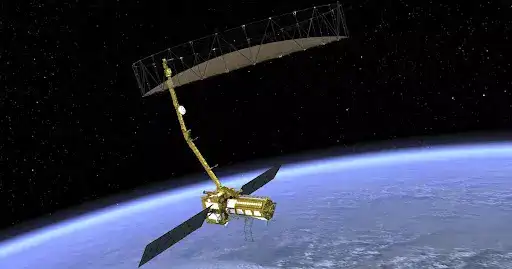Indian Astronaut to Visit ISS in May: India’s space ambitions reach new heights with the NISAR satellite set for launch in June and an Indian astronaut to visit the ISS under the Axiom-4 mission in May
The Indian government has confirmed that the long-delayed NISAR satellite, a joint mission between NASA and ISRO, will finally launch in June 2025. This crucial milestone in India’s space exploration ambitions was announced during a high-level meeting chaired by Union Minister Dr. Jitendra Singh. In addition, Indian Air Force Group Captain Shubhanshu Shukla will become the first Indian astronaut to visit the International Space Station (ISS) as part of NASA’s Axiom Mission 4 (Ax-4), scheduled for May 2025, reported timesofindia.indiatimes.com.
NISAR, a groundbreaking Earth-observing satellite, will provide high-resolution data on natural disasters and climate change, while Shubhanshu Shukla’s mission will mark a historic moment in India’s space journey.
The NISAR mission has been in development for over a decade, with its launch originally planned for 2024 but delayed due to technical issues, particularly with its radar antenna. Now, confirmed for a June liftoff aboard ISRO’s GSLV-F16 from Sriharikota, NISAR will provide invaluable data for monitoring Earth’s surface. The satellite, which weighs 2.8 tonnes and costs over Rs 5,800 crore, will utilize dual-frequency synthetic aperture radars (L-band from NASA and S-band from ISRO) to scan nearly all land and ice surfaces on Earth every 12 days, offering insights into natural disasters, climate change, land use, and seismic movements.
NISAR’s dual-band radar technology will detect surface changes as small as a few centimeters, even under cloud cover, and dense vegetation, making it an essential tool for research and disaster response. The satellite’s hardware, including radar reflectors, GPS receivers, and high-speed communication systems, was developed collaboratively across facilities in both the US and India. With cloud-based data storage and open access, NISAR aims to benefit scientists and policymakers globally.
Meanwhile, the Ax-4 mission will send Shubhanshu Shukla to the ISS aboard a SpaceX Dragon rocket, marking his journey as the first Indian astronaut to visit the station. The mission, scheduled for no earlier than May 2025, will involve a diverse crew, including astronauts from Poland and Hungary. The team will carry out more than 60 research experiments, with seven of them led by ISRO in collaboration with NASA and the European Space Agency (ESA). The research will cover a broad range of scientific fields, including studies on algae growth in microgravity, muscle loss therapies, and the genetics of resilience in extreme environments.
The Ax-4 mission represents a significant moment for India’s participation in global scientific collaborations, marking a step forward in India’s space exploration capabilities. The mission is set to be the most research-intensive mission to date for Axiom Space, with involvement from 31 countries, setting the stage for further advancements in microgravity research.







